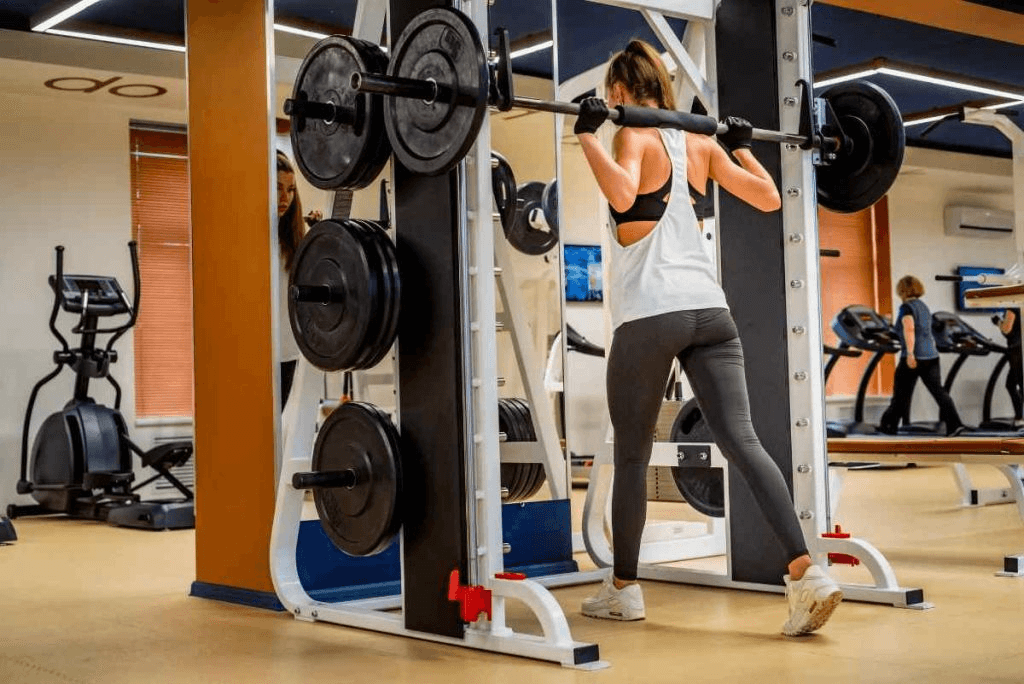When it comes to building raw lower-body strength with safe and powerful movement mechanics, few machines compare to the Hammer Strength Leg Press. With its plate-loaded design and linear path, this leg press has earned a place in both elite performance centers and commercial gyms worldwide.
In this article, we’ll break down how the Hammer Strength Leg Press works, the typical starting weight, how it differs from other leg press machines, and what to know before stepping onto the sled.
What Is the Hammer Strength Leg Press?
The Hammer Strength Plate-Loaded Leg Press is a linear leg press machine engineered for controlled, natural movement. Unlike a traditional 45-degree leg press, this version uses a horizontal or near-horizontal sliding sled that moves back and forth on a fixed track. The user pushes the weight away using the legs while seated in an upright position, which helps reduce spinal compression and encourages better posture during lifts.
Several variations exist, including:
-
Hammer Strength Linear Leg Press
-
Seated Leg Press
-
Horizontal Leg Press
Each shares the same core principle: smooth, plate-loaded resistance that mimics the natural push of a squat with added safety and support.
What Is the Starting Weight of a Hammer Strength Leg Press?
A common question users ask is: How much does the Hammer Strength Leg Press weigh without plates? The sled weight (or "starting weight") varies slightly depending on the model, but generally falls between 118 lbs to 144 lbs (54 kg to 65 kg). This starting resistance comes from the heavy-duty construction of the sled itself, which should be accounted for when programming your lifts.
So if you're doing leg presses with two 45 lb plates on each side, your total load is not just 180 lbs—it's closer to 300 lbs, including the sled.
Benefits of the Hammer Strength Linear Leg Press
-
Joint-Friendly Movement Path
The linear track guides your legs through a consistent motion, reducing shear force on the knees and lower back compared to free-weight squats. -
Better Isolation of Leg Muscles
The fixed path allows you to concentrate on pressing with the quads, hamstrings, and glutes, minimizing the need for stabilization from smaller muscle groups. -
Progressive Overload Made Simple
Loading and unloading weight plates is fast and efficient. Whether you're adding five pounds or stacking it with multiple plates, you can easily track strength gains. -
Ideal for All Levels
From beginners working on form to advanced lifters training at near-max capacity, this machine adapts to a wide range of users.
How to Use the Hammer Strength Leg Press
-
Adjust the Seat
Ensure your knees are bent at roughly a 90-degree angle when seated, with your feet flat on the sled shoulder-width apart. -
Load Your Plates
Add weight evenly to both sides of the sled. Don’t forget to include the sled’s base weight in your total calculation. -
Set Your Feet Properly
Higher foot placement targets more glutes and hamstrings. A lower stance emphasizes the quads. -
Control the Range of Motion
Lower the sled slowly until your knees nearly touch your chest, then press back up without locking out your knees. -
Maintain Breathing and Core Stability
Inhale on the descent, brace your core, and exhale as you press the sled upward.
Hammer Strength Leg Press vs Other Leg Press Machines
| Feature | Hammer Strength Leg Press | Traditional 45° Leg Press | Seated Horizontal Leg Press |
|---|---|---|---|
| Movement Path | Linear (horizontal or angled) | Inclined (45 degrees) | Horizontal push |
| Starting Weight (sled) | ~118–144 lbs | ~75 lbs | ~0–20 lbs (selectorized) |
| Resistance Type | Plate-loaded | Plate-loaded | Weight stack (selectorized) |
| Best For | Strength and size gains | General hypertrophy | Rehab, seniors, beginners |
| Space Requirement | High | Moderate | Low |
Final Thoughts
The Hammer Strength Linear Leg Press offers a rock-solid platform for building lower-body strength, improving hypertrophy, and training with progressive resistance. Whether you're focused on heavy power sets or higher-rep muscle-building protocols, this machine delivers results with safety and consistency.
If you’re training in a facility that offers this equipment, it’s worth adding into your lower-body routine—especially if you want to go heavy without placing excess strain on your spine. And if you're building a gym of your own, the Hammer Strength Plate-Loaded Leg Press is a serious piece of equipment that brings professional-grade training into your home.











































Leave a comment
This site is protected by hCaptcha and the hCaptcha Privacy Policy and Terms of Service apply.